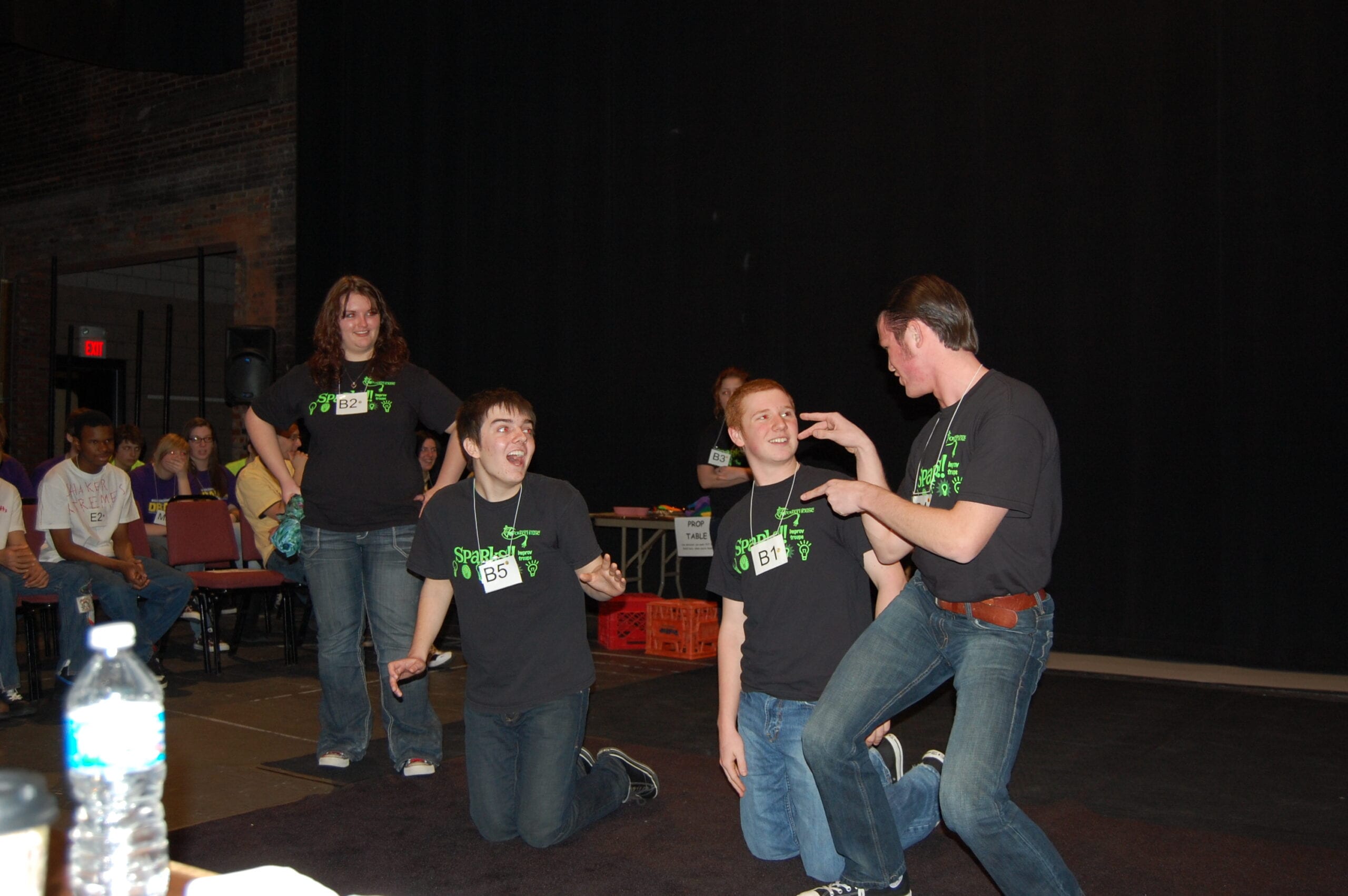Improv exercises take us out of our comfort zone and allow us to play, think on our feet, and be present in the moment. Recently, our Artistic Director Michael Thomas wrote (about his experience as a performer at renown improv comedy theatre The Second City), "The best improvisers are also the most profoundly adept actors. And why? Because they are always listening and reacting. They stay “in the moment” – so their reactions are always honest and believable."
Here are three improv games, one for children, one for teenagers, and one for adults, that will help to build your team. If you're a teenager interested in learning to improvise, our free Improv Underground classes begin February 8th - learn more here.
For Elementary/Middle School and older:
Vacation Pictures--(4 players)
Playing:
- Set up two chairs, with approximately 6 to 8 feet between them. Your chairs should be facing the audience.
- Choose two people to sit in the chairs—they will act as the people describing what they did last summer (or whatever you choose).
- Choose two additional people to stand between the two chairs, also facing the audience.
Chair Actor Actor Chair
(with “narrator” seated) (with “narrator” seated) - Take suggestions for possible vacation locations from your audience.
- Once a location is selected, the two people in chairs take turns making statements about what they did last summer, such as, “We went to Cedar Point, and rode a roller coaster.” On the count of three (which the instructor, or audience, can do), the two actors standing between the chairs must create an interesting pose, as they would if in the “photo” of their roller coaster ride. Allow each “narrator” to describe two or three “photos.”
- Allow those describing to switch places with those acting so that all may have a turn.
For High School and older:
Garage Sale—(4 players)
Playing:
- Players get a few suggestions (from the audience) of items which might be found at a garage sale.
- One player (Player A) leaves the playing area as the other players group together (as a “pile” of items at a garage sale). (NOTE: You may also have the players form a line of items from left to right, as though they’re lined up for the garage sale.)
- Player A enters and begins looking other players as if they were items for sale. Player A chooses one “item” (Player B) and pulls them down stage (forward; closer to the audience). Player A identifies what Player B is to become by saying something like, “My, what a lovely teapot;” or “I wish there wasn’t a crack in this mirror.”
- Player B comes to life and gives a short few sentences about their experience (as that item) in the world. This monologue can be very short (30 seconds to a minute) and can be directed to the shopper (Player A) or given to the audience.
- Player A puts the first item back into the pile or line, and chooses another item, and the pattern repeats.
- The scene ends when Player A decides what items he would like to buy, and takes them with him/her off stage.
For Adults:
Pros and Cons—(as many players as desired)
Playing:
- Using as many players as desired, form a single-file line from the front of the playing space to the back of the playing space. (Players are lined up, one behind another, all facing the audience.)
- The instructor will give the first player in the line a subject, object, or person’s name with which to work. It is the first player’s job to talk positively (or “pro”) about their given subject, object, or person for a designated amount of time. (30 seconds is a good length of time. Either the instructor/moderator can serve as the time-keeper, or they may assign someone to keep the time.)
- At the end of the designated amount of time, the time-keeper will say, “switch,” at which point the first person in line stops talking, and turns to the player behind them to give that person another subject, object, or person’s name. The first player either returns to their seat in the “audience area,” or goes to the end of the line.
- Once players have switched spots, the second player in line will now be at the front of the line. It is their task to talk about their given subject, object, or person in a negative (or “con”) fashion for the designated amount of time.
- This continues, with players alternating “pro” and “con” as the line moves from player to player, until all of had a turn.
Hints: It is usually best to advise the players not to suggest subjects which may be controversial in nature, as this may make others uncomfortable, thus defeating the idea of team building or playing. Additionally, when working with players who may or may not know each other well, it is often wise to avoid suggesting names of celebrities or character names from pop culture, as not everyone will know that person of whom they’re asked to speak.
